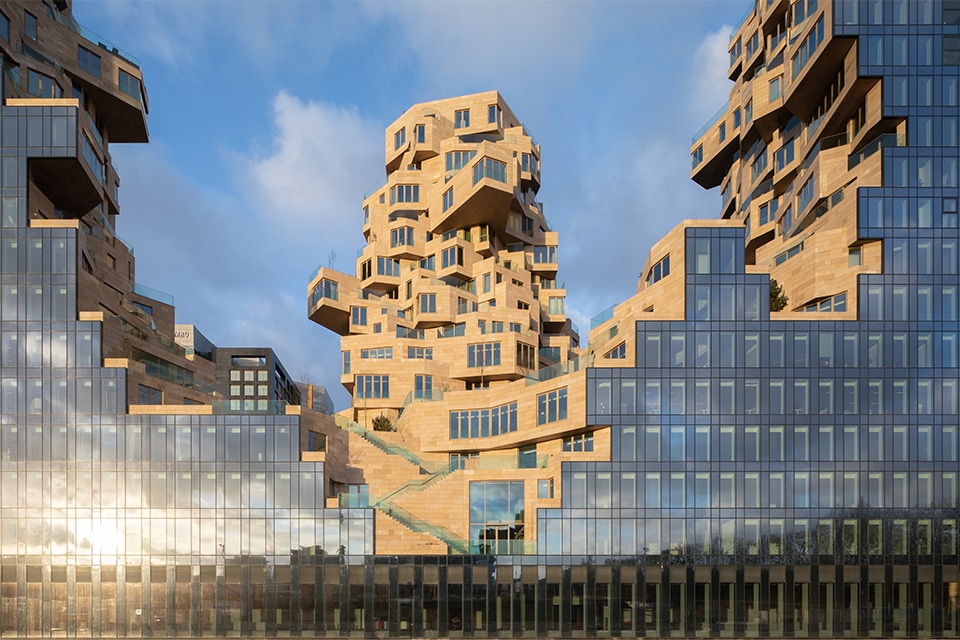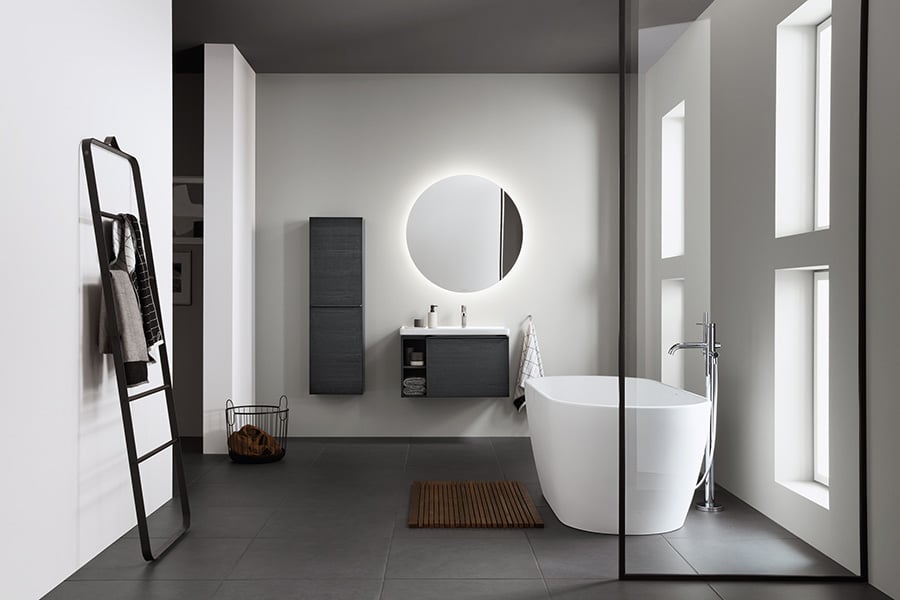
How to comply with Bbl: fire class B and BENG/NOM with prefab HSB
Prefabricated HSB facades with integrated frames are increasingly used as a complete facade solution in residential and commercial construction. This construction method not only offers advantages in terms of construction speed, but also fits in well with the current requirements of the Besluit bouwwerken leefomgeving (Bbl) (Building Works Environment Decree). Three recent construction projects by WEBO - De Stadswinkel in Tilburg, Fibonacci and Houtrak in Amsterdam - demonstrate that building with wood is an excellent combination with fire class B and BENG & NOM.
Free white paper
To provide a better understanding of building codes and fire resistance compliance, WEBO has a whitepaper compiled with explanations, figures and practical examples. Additional fire class B documents for various facade finishes are also included.

City store: biobased transformation
For the transformation of the City Store biobased materials have been used as much as possible. Building with HSB elements combined with Accoya®-frames and fraké cladding was therefore a logical choice. The transparently finished Accoya®-frames are made of native modified softwood and fall into durability class 1.
To meet fire class B (B-s2-d0), the cladding is fire-retardant modified. In addition, CE-marked Refractory®-frames applied that comply with the strict European legislation (EN 16034). The application of triple glazed NOM Frames and HSB elements provides an Rc value of 6.0, which more than satisfies the BENG requirement.
Fibonacci: energy efficient and fire resistant
The inside of Fibonacci features an atrium, for which WEBO engineered, manufactured and assembled the HSB elements, larch window frames and Oregon pine trim. With an EPC of 0.15, the homes' energy consumption is minimal.
Fibonacci's atrium falls under the requirements for outdoor spaces. WEBO therefore worked with Peutz to see how, among other things, fire class B could be met. Thus the elements are equipped with CE-marked Fireproof®-frames and CE-marked cladding (EN 14915).
Houtrak: circular azobé cladding
At Houtrak has been chosen for Scaffoldless®-elements, prefabricated with NOM wooden window frames and azobé cladding. Uniquely, this azobé wood comes from old sheet pile walls. These have only been cleaned, dried, cut to size and applied to the elements.
Due to the high hardness of azobé, no additional modification was required to meet fire class B. In addition, the cladding falls into durability class 1.
Free white paper
Wondering how to use precast HSB elements and wooden frames meets fire class B and BENG/NOM? Download the whitepaper with relevant information for your next project.

Or contact Job Huisman for more information!
Heeft u vragen over dit artikel, project of product?
Neem dan rechtstreeks contact op met WEBO - Inventors in the carpentry industry.
 Contact opnemen
Contact opnemen





